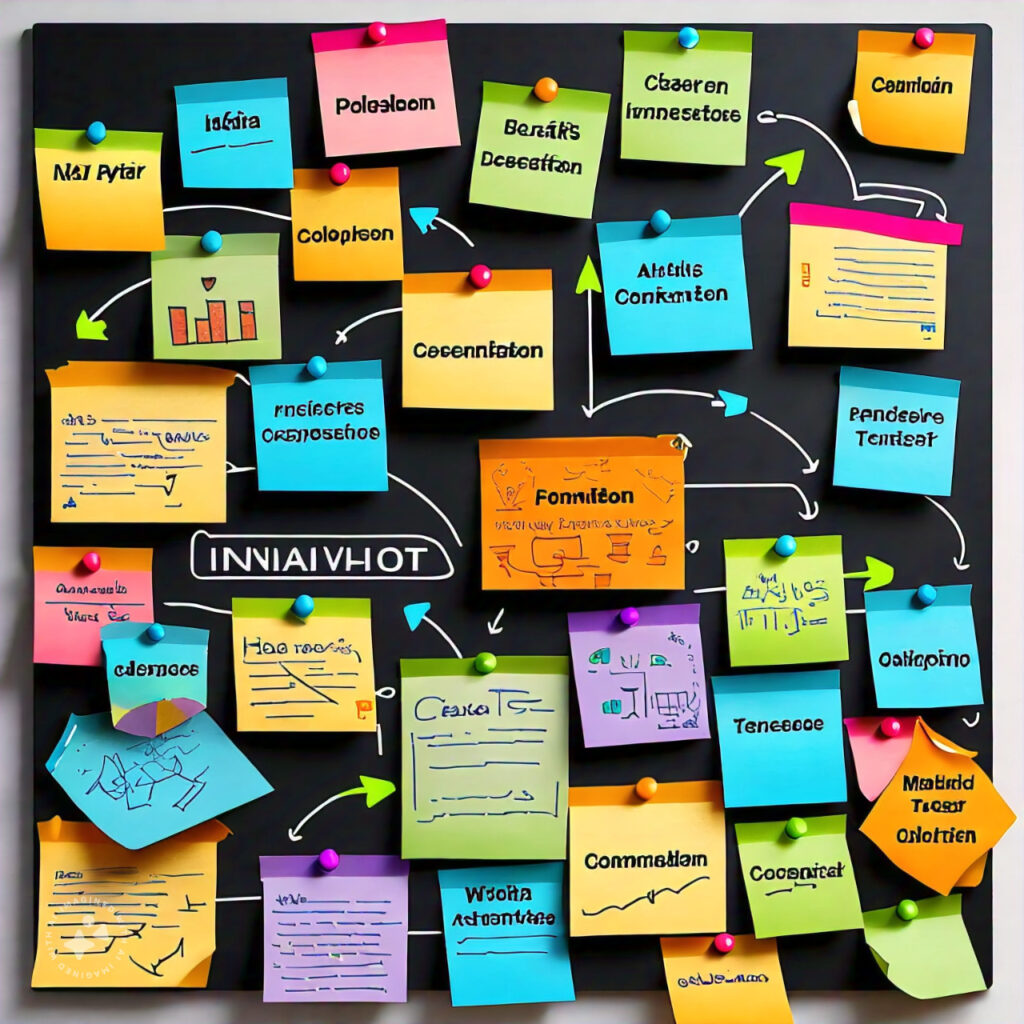Innovation has emerged as the pivot on which the success and survival of organizations depend in the rapidly changing business environment. However, engaging in innovation activities alone is not enough; companies have to be able to measure and evaluate their innovation performance to ensure they are on the right road and maximizing resources.
In this in-depth guide, you will learn everything about innovation performance measurement—from why it is important to implement certain metrics and frameworks. Be it from a business leader, innovation manager, or simply someone keen on understanding how companies gauge their innovative effort, this article offers so much on the world of innovation measurement.
- Why Innovation Performance Measurement Is Important
1.1 Continuous Improvement
Innovation performance measurement allows an organization to learn its strengths and weaknesses to improve by making data-driven decisions.
1.2 Justification of Innovation Investment
Measuring innovation provides the results to justify further investment in initiatives related to innovation to stakeholders and leadership.
Performance measurement will ensure innovation activities are aligned with the overall strategy and objectives of the business.
1.3 Innovation Alignment with Business Strategy
1.4 Employee Motivation and Engagement
Clear metrics can help to further motivate employees by providing tangible targets and the recognition required for them to see the meaning in their contributions to the innovation effort.

- Challenges to Measuring Innovation Performance
2.1 Defining Innovation
Innovation can come in so many different forms: incremental improvements or disruptive new products or business models. It can be hard to define what innovation is in any given organization.
2.2 Long-Term Nature of Innovation
Many innovative efforts might not yield immediate results; this would make an accurate measurement of short-term performance a problem.
2.3 Intangible Aspects of Innovation
Some aspects of innovation, such as knowledge creation or cultural changes, may be more difficult to quantify.
2.4 Optimizing Multiple Objectives
The pursuit of innovation is often about balancing multiple and competing objectives, such as short-term profitability and long-term growth.

- Key Dimensions of Innovation Performance
3.1 Inputs
These are the resources which have been invested in innovation, including:
- R&D spending
- Number of employees involved in innovation activities
- Time allocated to innovation projects
3.2 Process
This dimension examines how effectively the organization converts inputs into outputs:
- Time-to-market for new products
- Number of ideas generated
- Collaboration and knowledge-sharing metrics
3.3 Outputs
Direct output from innovation activities is as follows:
- Number of new products or services launched
- Number of filed patents
- Revenue from new products
3.4 Outcomes

This dimension measures the broader impact of innovation on the business:
- Market share growth
- Customer satisfaction improvements
- Brand perception changes
- Frameworks of Measuring Innovation Performance
4.1 The Balanced Scorecard
This framework, developed by Kaplan and Norton, can be developed for innovation measurement under four perspectives:
- Financial
- Customer
- Internal Processes
- Learning and Growth
4.2 The Innovation Funnel
It involves tracking ideas through a range of development stages, such as:
- Ideation
- Concept Development
- Prototyping
- Launch
- Post-launch review and evaluation
4.3 The Innovation Value Chain
This framework was forwarded by Hansen and Birkinshaw, and it looks at three major phases:
- Idea Generation
- Conversion
- Diffusion
4.4 The Innovation Radar
This tool developed by Sawhney, Wolcott, and Arroniz scrutinizes innovation across 12 dimensions, including:
- Offerings
- Platform
- Solutions
- Customers
- Customer Experience
- Value Capture
- Key Performance Indicators for Innovation
5.1 Financial Metrics
- Return on Innovation Investment (ROI2)
- Percentage of revenue from new products
- Innovation sales ratio
5.2 Customer-Focused Metrics - Customer satisfaction with new products
- Net Promoter Score for innovations
- Market share of new products
5.3 Process Metrics
Innovation pipeline velocity
Idea conversion rate
Time-to-market for new products
5.4 Learning and Growth Metrics
Number of employees trained in innovation methodologies
Employee engagement in innovation activities
Knowledge sharing and collaboration metrics
- Implementing an Innovation Measurement System
6.1 Define Your Innovation Strategy
Measurement should start with the articulation of what the organization is trying to achieve in terms of innovation, and how it fits with overall business strategy.
6.2 Choose Relevant Metrics
-select KPIs that are most relevant to an organization’s innovation strategy and organizational context; it is important to avoid measuring everything.
6.3 Set up Baselines and Targets
Define your present levels of performance and set targets for the improvement of this performance realistically.
6.4 Set up Data Collection Processes
Establish systems and procedures for collecting and analyzing innovation performance data regularly.
6.5 Develop Reporting Mechanisms
Set up schedules and formats for regular reporting that will be used to communicate innovation performance to all stakeholders.
6.6 Establish a Culture of Measurement
Encourage staff to perceive measurement as a way of improving performance and not a means of punishment.
- Innovative Techniques of Performance Measurement in Innovation
7.1 Predictive Analytics
Use historical data and machine learning algorithms to predict future innovation performance and pinpoint areas of potential improvement.
7.2 Benchmarking
Compare your innovation performance to that of industry peers or best-in-class companies to identify areas for improvement.
7.3 Real-time Monitoring
Implement systems that provide for the continuous monitoring of innovation performance to enable the response to changes or problems much faster.
7.4 Portfolio Analysis
Investigate the performance of your entire innovation portfolio, and achieve an appropriate balance in risk and reward between different project types.
- Qualitative Approaches to Measuring Innovation
8.1 Case Studies
Create detailed case studies of successful and unsuccessful innovation projects to identify key success factors and lessons learned.
8.2 Innovation Audits
Use innovation process and capability audits regularly to identify strengths and weaknesses.
8.3 Employee Surveys
Get feedback from employees about the culture of innovation, innovation processes, and innovation performance in the organization.
8.4 Customer Feedback
Qualitative feedback from customers about new products or services should be collected to provide a balance to quantitative metrics.
- Common Mistakes in Measuring Innovation
9.1 Overreliance on Quantitative Indicators
While quantitative metrics are needed, do not forget to get qualitative insights that would be in a position to add context and depth to your understanding of innovation performance.
9.2 Focusing Solely on Outputs
Remember to measure the inputs and the processes—not only the outputs and the outcomes—if you want a complete picture in terms of measuring innovation performance.
9.3 Ignoring Failed Projects
Measure and analyze the performance of all innovation projects to learn from successes and failures alike.
9.4 Neglecting Long-term Impact
Balance short-run metrics with indicators of long-term innovation success and sustainability.
- Adapting Measurement to Different Types of Innovation
10.1 Incremental Innovation
For minor, incremental innovations, efficiency metrics, and customer satisfaction should be employed.
10.2 Radical Innovation
For the more disruptive innovations, learning metrics and long-term impact measures should be used.
10.3 Business Model Innovation
Value creation, customer acquisition, and market disruption metrics should be considered.
10.4 Open Innovation
The effectiveness of external partnerships and the integration of outside ideas should be measured.
- The Future of Innovation Performance Measurement
11.1 Artificial Intelligence and Machine Learning
AI-enabled tools will allow for deeper innovation data analysis and predictive modeling.
11.2 Big Data Analytics
The ability to process and analyze large volumes of data offers the key to further insights regarding innovation performance.
11.3 Internet of Things
IoT devices will be enabled to trace in real-time the use and performance of products that offer material data in the measurement of innovation.
11.4 Sustainability Metrics
Innovation performance measurement will most likely shift to environment and social impact metrics as the world becomes more conscious of sustainability.
Conclusion
The measurement of innovation performance is multifaceted and a very important element for an organization to progress and sustain in a fiercely competitive business environment. In this way, organizations can only reap many benefits from a complete measurement framework in understanding their efforts at innovation, making decisions based on facts, and enhancing their ability to innovate over time.
Successful innovation measurement lies in metric-strategy alignment, a balance of qualitative and quantitative approaches, and a culture focusing on measurement as a means to improve. As technology further advances and new business landscapes emerge, there will be further evolution of methods and metrics for measuring the performance of innovation; thus, creating more opportunities for an organization to further refine and improve the processes and outcomes of innovation.
These shall be the principles and practices through which business leaders and innovation managers in any organization could increase their capacities for innovation performance tracking, evaluation, and improvement. This will mean more successful innovation initiatives with resultant competitiveness that spur growth in an ever-changing market.
Keep in mind that measurement of innovation performance is not an end in itself, serving only to produce numbers and reports, but it should contribute to a better understanding of your innovation ecosystem and drive meaningful improvements. Properly conceptualized, measurement can unleash an organization’s full innovative potential and secure its place as a leader in its industry.






